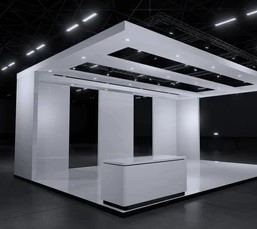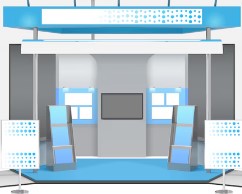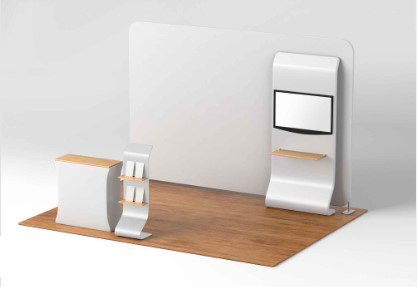Trade show booths provide a unique platform for companies to showcase their products and services, engage with potential clients, and strengthen brand visibility. However, many businesses approach trade shows with a short-term mindset, focusing solely on immediate sales rather than the bigger picture of relationship building. This approach can lead to missed opportunities for cultivating long-term partnerships that drive sustainable growth. This article explores strategies to leverage trade show booths effectively for generating enduring business relationships.
Understanding the Role of Trade Shows
Trade shows are events where companies from specific industries gather to showcase their offerings, network, and learn about the latest market trends. While trade shows are often viewed as opportunities to make quick sales, their true potential lies in relationship building. They allow businesses to connect with decision-makers, industry influencers, and potential collaborators who can contribute to long-term success.
Attending a trade show without a clear strategy is akin to fishing without a hook—you may attract some attention, but the results will be minimal. To generate long-term business relationships, companies must adopt a strategic approach that combines planning, engagement, and follow-up activities.
Designing a Trade Show Booth That Encourages Engagement
The first step in leveraging trade shows for long-term relationships is designing a booth that attracts and engages attendees. A visually appealing booth is essential, but functionality and interactivity play a crucial role in fostering meaningful conversations.
- Visual Appeal and Branding:
Your booth should reflect your brand identity clearly. Use consistent colors, logos, and messaging to make your brand instantly recognizable. High-quality graphics, banners, and displays create a professional impression and help your booth stand out in a crowded exhibition hall. - Interactive Elements:
Incorporating interactive elements such as product demos, virtual reality experiences, or touchscreens encourages attendees to spend more time at your booth. Interaction fosters engagement and opens the door for deeper conversations. - Comfortable Environment:
Providing seating areas or refreshments encourages visitors to linger. A comfortable setting allows for relaxed discussions, which are more likely to lead to meaningful connections. - Clear Communication of Value Proposition:
Ensure your booth communicates the value of your products or services clearly and quickly. Visitors should understand what makes your business unique and why a partnership could be beneficial.
Preparing Your Team for Relationship-Oriented Engagement
Even the most visually appealing booth is ineffective without a well-prepared team. Your trade show staff should be trained not only to showcase products but also to engage with attendees strategically.
- Active Listening Skills:
Encourage staff to listen actively to visitors’ needs and pain points rather than delivering scripted pitches. Understanding the visitor’s challenges allows your team to tailor conversations and propose solutions that add value. - Knowledge of Products and Industry Trends:
Staff should be well-versed in product features, benefits, and industry developments. This expertise builds credibility and helps foster trust, which is essential for long-term relationships. - Relationship-Focused Mindset:
Emphasize that the primary goal is to cultivate relationships, not just make immediate sales. Staff should aim to identify potential long-term partners and influencers, noting their specific interests and follow-up needs. - Effective Communication and Follow-Up:
Collect contact information efficiently and ensure staff knows how to categorize leads based on their potential value. Personalizing follow-ups is key to demonstrating genuine interest in building a relationship.
Engaging Visitors Through Value-Driven Conversations
Trade show interactions should focus on creating value for attendees. When visitors perceive that your company can help solve problems or improve their operations, they are more likely to view your brand as a trusted partner rather than just another vendor.
- Ask Insightful Questions:
Begin conversations with open-ended questions that encourage visitors to share their goals, challenges, and priorities. For example, “What are the biggest challenges your team faces in X area?” opens the door for meaningful dialogue. - Provide Solutions, Not Just Products:
Position your offerings as solutions to specific problems rather than standalone products. Tailor your discussions to demonstrate how your company can contribute to their long-term success. - Showcase Case Studies and Success Stories:
Real-world examples of how your products or services have helped other clients build credibility and demonstrate your commitment to results. Highlight long-term outcomes rather than one-time successes. - Use Technology to Enhance Engagement:
Tools like tablets or interactive screens can display product demos, videos, or testimonials, making your booth experience more dynamic. Technology also allows for capturing visitor preferences, which is valuable for follow-up efforts.
Capturing and Nurturing Leads Effectively
Generating long-term business relationships depends on how well you capture and nurture leads during and after the trade show.
- Lead Collection Systems:
Use digital lead capture tools to gather contact information efficiently. Capture additional details such as the visitor’s role, interests, and timeline for decision-making to facilitate personalized follow-ups. - Immediate Post-Show Follow-Up:
Send a personalized email or message within a few days of the event. Reference specific topics discussed at the booth to show that you paid attention and value the interaction. - Segment and Prioritize Leads:
Not all leads are equal. Categorize leads based on potential value, readiness to buy, and strategic importance. This allows your team to prioritize high-value opportunities without neglecting other prospects. - Provide Ongoing Value:
Instead of a single follow-up, nurture relationships by sharing relevant content such as industry insights, white papers, or product updates. Continuous engagement demonstrates commitment and keeps your brand top of mind.
Leveraging Social Media and Digital Tools
Trade shows don’t have to end when the event closes. Social media and digital tools can extend your reach and reinforce relationships.
- Live Updates and Engagement:
Share live updates, photos, or videos from the trade show to engage a broader audience online. Tag attendees and industry influencers to increase visibility and foster online interactions. - Post-Event Content:
Publish blog posts, recap videos, or case studies highlighting your participation in the trade show. This positions your company as an active industry player and reinforces your credibility. - Social Listening:
Monitor social media mentions and discussions related to the trade show. Engaging with online conversations can uncover potential leads and provide opportunities for follow-up engagement.
Building Long-Term Partnerships Through Thought Leadership
One of the most effective ways to generate lasting relationships is by positioning your company as a thought leader. Trade shows provide an ideal platform to showcase expertise and build credibility.
- Speaking Opportunities and Panels:
Participate in panels, workshops, or presentations to demonstrate industry knowledge. Sharing insights and trends establishes your authority and attracts potential partners who value expertise. - Content Sharing:
Offer valuable resources such as e-books, white papers, or research reports at your booth. Providing actionable insights positions your company as a trusted advisor rather than just a product supplier. - Collaborative Opportunities:
Explore opportunities for joint projects, co-marketing, or strategic partnerships. Trade shows allow you to identify businesses with complementary offerings, opening the door for mutually beneficial collaborations.
Measuring Success Beyond Immediate Sales
To ensure trade show participation translates into long-term business relationships, it is crucial to measure success using metrics beyond immediate sales.
- Quality of Leads:
Track the number of high-value leads and their progression through the sales pipeline. Focus on relationships that have long-term potential rather than solely measuring the number of booth visitors. - Follow-Up Engagement:
Monitor the effectiveness of follow-up communications, including response rates and the depth of conversations. Strong engagement indicates that relationships are developing. - Partnerships and Collaborations:
Evaluate the number of strategic partnerships, joint projects, or referrals resulting from trade show interactions. These outcomes are strong indicators of long-term relationship-building success. - Brand Perception:
Gather feedback from attendees to assess how your brand is perceived. Positive impressions increase the likelihood of future collaborations and repeat interactions.
Trade shows are much more than a venue for short-term sales—they are powerful platforms for establishing enduring business relationships. By focusing on booth design, staff training, meaningful engagement, and strategic follow-up, companies can transform fleeting interactions into long-lasting partnerships. Incorporating digital tools, thought leadership, and continuous value delivery ensures that connections made at trade shows evolve into sustainable relationships that contribute to long-term business growth.
Ultimately, the companies that view trade shows as opportunities to build trust, demonstrate expertise, and deliver value are the ones that reap the benefits of long-term success. When approached strategically, a trade show booth is not just a display space—it is a launchpad for relationships that can shape the future of your business.




